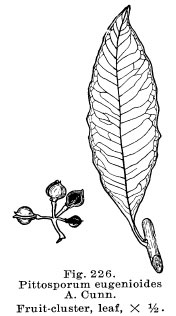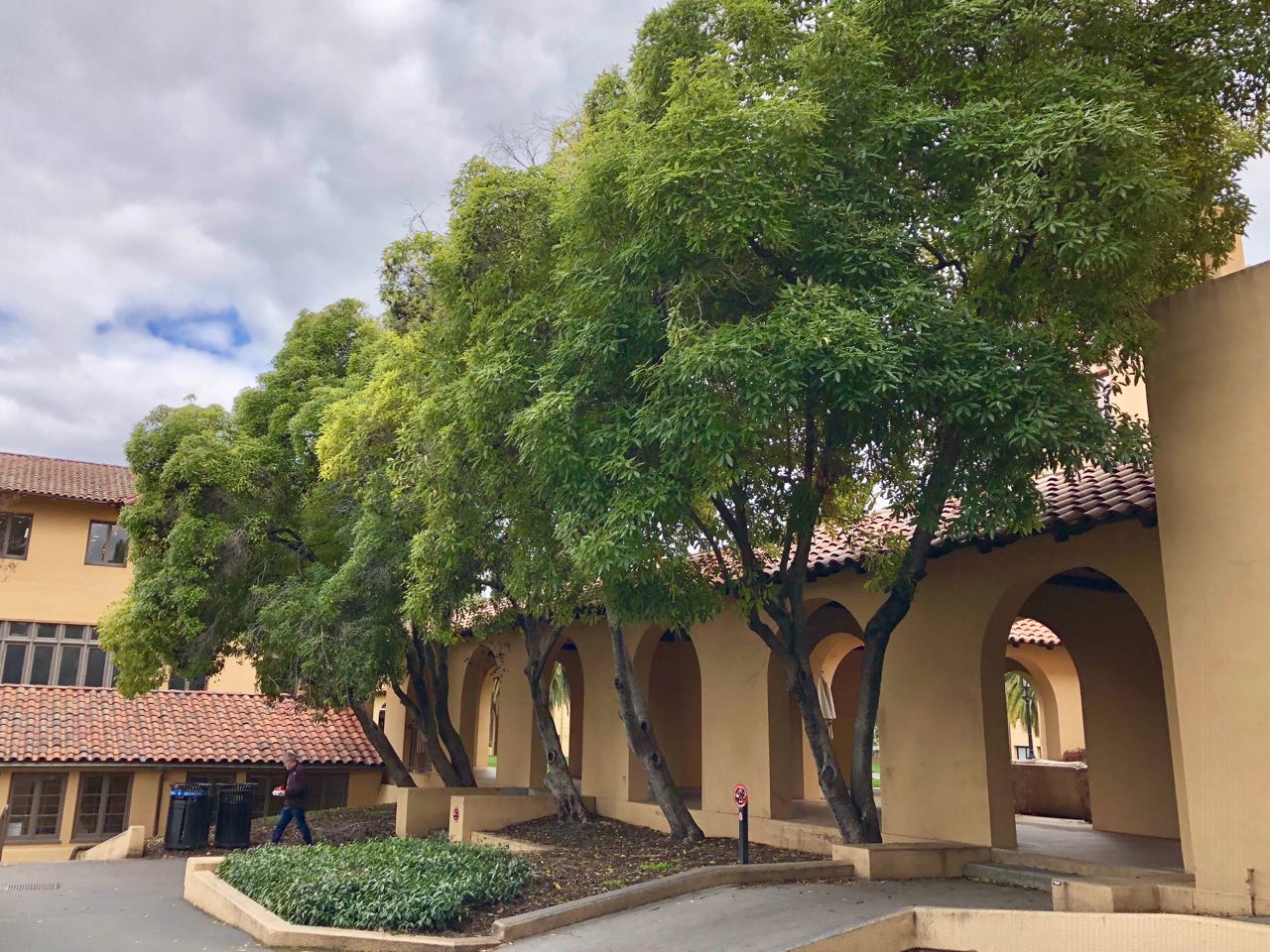Pittosporum eugenioides
 tarata
tarata

As you enter the Old Union courtyard from Panama Mall you pass under five taratas growing as small shade trees. There are others on the opposite side of the street. But the tree can also be grown as a hedge as may be seen a few yards to the east. Individuals can be found elsewhere on campus; there is a nice grove of mature trees at the intersection of Lane L and Lomita Drive, on the lake side of the driveway to Roble Hall.
Tarata leaves are quite distinctive, even at a distance, because the wavy edges of the glossy 2- to 4-inch leaves give a curious effect of being dappled in two tones of green. There is a resemblance to the smaller leaves of the kohuhu which, with the tarata, also has shiny black twigs supporting the new leaves. But the flowers are quite different, having narrow yellow petals spreading from a small cup, and being arranged in conical clusters.
Name derivation: Pittosporum – Greek pitta (pitch) and spora (seed), referring to the sticky seed coating; eugenioides – Eugenia-like.
About this Entry: The main text of this entry is from the book Trees of Stanford and Environs, by Ronald Bracewell, published 2005. John Rawlings added the Lomita Drive locations ca. 2008.




